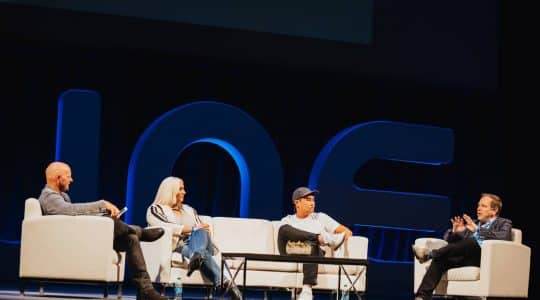Another year in the books. The change in the year field always marks a good time to look back, reflect on how the world has changed, and take stock of how we did. Mobile went through an amazing maturation in 2013, and it’s fascinating to see just how quickly we’ve moved forward. For mobile in general, and especially in ASO, 2013 was a year to remember.
But what does that mean, in concrete terms? What’s the State of ASO as we see it today? Where are there places for improvement in the coming year? How will we, as a community, create a better place with more opportunity, more meritocracy, and more success?
What 2013 Taught Us
The biggest thing the vast majority of us in ASO learned in 2013 was simple: ASO works. We saw and heard from many of our users and customers about the success they’ve had diving into the app stores, understanding consumers’ interactions with the app stores, and increasing their ranking and visibility in search results. We heard from small publishers who were able to level the playing field against larger competitors and succeed. We heard from large publishers who were able to save significant amounts of money on marketing costs by focusing on ASO and organic app marketing.
At the same time, we learned that success doesn’t come easily. Two years ago, changing your title once might have been the extent of your ASO efforts. And it might have even worked. But that’s not true anymore. Success in an increasingly crowded app store with more sophisticated marketers requires constant attention, refinement, and measurement. Chances are, today, you won’t succeed with just one or two stabs at placing the right keywords in your Keyword field. Instead, you’ll need to research and iterate continuously to find success and stay successful in an ever-changing result set.
Further, there are now ASO consultants — people whose primary responsibility is to help brands and SMBs rank highly in the app store. Look at what Gabriel Machuret has done with his practice as a great example. This dedication to ASO shows the importance of visibility in the app store as well as the demand by publishers to focus on organic channels with high-value users.
Consumers Care About Search — And Not Just Branded Search
More than just seeing demand for ASO tools and solutions by publishers, a huge reason the ASO world was successful in 2013 is that search is becoming increasingly important for consumers.
Following up on Nielsen’s report in 2012, Forrester released a study showing the importance of search. Almost exactly like Nielsen, Forrester reported that almost 65% of all app consumers use app store search to discover apps. That’s on the device, in the app store, not inclusive of other general browsing and Top Charts. That ranks it as the largest app discovery channel for consumers.
Google Play, too, released some data on search at Google I/O. Some of the money stats: 50% of DAUs search for apps weekly and “for the average app, search actually makes up the vast majority of installs.”
Perhaps my favorite statistic, though, from Google I/O, was that Google Play sees over 6,000,000 unique phrases searched for monthly. That’s a significant number for a young platform, and demonstrates that search in the app store is categorically NOT just branded search.
The App Stores Care, Too
Given that consumers care about search so much, it’s no surprise that the app stores have begun to show how much they care about app store search as well.
Apple made a decent number of changes this year that signaled its interest in app store search. It reduced the importance of download velocity in Top Charts rankings, showing that (a) they don’t want Top Charts to be gamed, but also that, (b) discovery is important to them, and that, long-term, they care about how users find apps organically. In November they changed their algorithm to correct for fat-finger and spelling mistakes, making results more relevant regardless of whether users search correctly. And, in December, they significantly changed their algorithm again, showing they care about making their search results more relevant and their algorithm more sophisticated.
In addition to releasing data at Google I/O, Google Play also made significant improvements to their search algorithm, looking at things like +1s and links to the Google Play detail page. Google showed a willingness to use their existing infrastructure — as well as create new infrastructure — to make search more relevant in Google Play.
Additionally, Google made what I believe to be the biggest announcement of the year with Google App Indexing. Google App Indexing shows one of the first major steps to the convergence of web and mobile. It has the potential to be a massive game changer, and one that could ultimately lead to orders of magnitude more engagement and conversions within apps for publishers.
ASO Is Taken Seriously, Just Look At The Jobs
One way to quantitatively measure the state of ASO is to look at the number jobs around the space. Given that the term “App Store Optimization” was fundamentally invented just a couple years ago, it still surprises me to this day to see how quickly smart marketers have embraced ASO. Look at the current results from both Indeed and LinkedIn for searches related to ASO.

We’ll keep tracking these every month or so going forward, providing a proxy for the popularity, viability, and growth of ASO.
Even more interesting, SimplyHired shows App Store Optimization is perhaps the fastest growing mobile marketing segment from August 2012 to August 2013:
| Term | Growth |
|---|---|
| app store optimization | 400% |
| mobile marketing | -14% |
| mobile seo | 0% |
App Store Search Is Still Unsolved, But Google Leads The Way
Very clearly, the state of ASO is strong. Don’t take that, however, to mean that everything is roses and butterflies. Nay, instead, I believe we’re only 1% of the way to where app store search needs to be.
In my opinion, we’ve begun to transition from the Yahoo! era (a simple directory of all apps) into the AltaVista era (search is important, but we’ve yet to figure out how to best perform it), but we certainly haven’t figured out how to make it as useful as the Google era, with incredibly relevant results and a fantastic user experience for searching.
There are lots of smart people trying to solve this problem, from startups to the app stores themselves. Quixey is working hard (and raising lots of money) on their AppURL product, allowing deep-linking within apps. Google and Apple both released significant changes and announcements this year.
At the end of the day, however, it looks like Google quietly led the way in 2013 to become, well, the Google of apps. Their search expertise, their ever growing Android platform, and their constant innovation shows they recognized the importance of app store search — and are playing to win.
2014 will, no doubt, be an incredible year for anyone involved in mobile, and I expect we’ll see massive changes in the ASO landscape. As marketers, we’ll continue to show value, continue to drive towards high-quality, organic channels, and see the level of sophistication from both marketers and app stores to rise drastically.
With that, onward and upward, ASOs!
Author
Becky is the Senior Content Marketing Manager at TUNE. Before TUNE, she handled content strategy and marketing communications at several tech startups in the Bay Area. Becky received her bachelor's degree in English from Wake Forest University. After a decade in San Francisco and Seattle, she has returned home to Charleston, SC, where you can find her strolling through Hampton Park with her pup and enjoying the simple things in life.




Leave a Reply
You must be logged in to post a comment.